| back to current program | ||
| 2013 | ||
| September 4, 2013 World Cafe Live |
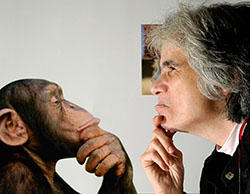 Janet Monge Janet MongeUniversity of Pennsylvania Museum/Anthropology “Forensic Anthropology: Death by Hemlock, Cholera, and Marijuana” The basic analytic tool kit of forensic anthropologists is applied to 3 very different case studies. Dealing with decomposed or partially decomposed human remains presents a special set of challenges to anthropologists working in forensics. Indeed, in only about 25% of cases can anthropologists contribute in significant ways to forensic cases – contra the popular lore as portrayed in TV shows like BONES. This presentation will include discussions of the limitations of forensic anthropology and include cases in which the forensic anthropologist have been wrong in their assessment of the remains. |
|
| October 2, 2013 World Cafe Live |
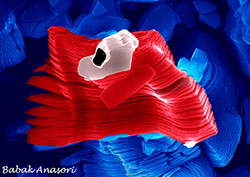
NOVA Innovation Café The form and structure of atomically thin two-dimensional materials are significantly different from their three-dimensional counterparts, causing two-dimensional materials to behave in unique and unfamiliar ways that have the potential to push the limits of technology and materials science. This talk will present the world of two-dimensional materials, looking specifically at a large new family of 2-D transition metal carbides and carbonitrides, called “MXenes,” recently discovered by Drexel University’s Department of Materials Science and Engineering, and several new possible avenues for practical applications of MXenes, including faster battery charging. |
|
| October 14, 2013 Stoney’s British Pub |
 Dr. Charles Potter Dr. Charles PotterTA Instruments, New Castle DE “Anatomy of a Soda Bottle” The local inventor of the soda bottle was born 102 years ago on October 24th. You know his father, Newell. You also know his brother and other members of his family. So who was this noted DuPont researcher? His patented invention of 1973 changed the beverage packaging industry. Today, soda and beverage bottles are ubiquitous. They line store shelves, fill up landfills, and are a part of every-day life. So what sophisticated plastics technologies are needed to make a bottle, its label and cap. The Delaware valley is where much of this technology began. |
|
| November 4, 2013 Stoney’s British Pub |
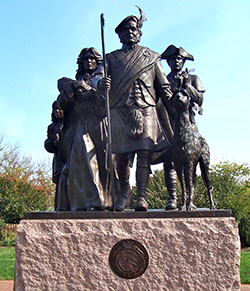 Terry Jones Terry JonesSculptor, Newtown Square “Lost Wax Bronze Casting” This PowerPoint show and presentation will explain the Art of Bronze–casting and the process of making monuments. Bronze-casting was perfected by the Greeks around 2,500 years ago and the process has changed very little since then. Terry will walk the audience through the creative process from concept through the various stages of design and sculpting, the foundry processes right up to final installation and dedication, using three particular Terry Jones monuments to illustration the steps. |
|
| November 13, 2013 World Cafe Live |
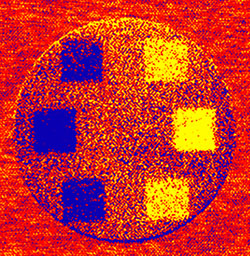 NOVA Innovation Café NOVA Innovation CaféNader Engheta Electrical & Systems Engineering, University of Pennsylvania “Abracadabra:Making Things Invisible and Seeing the Unseen” How can we make an object invisible? When a wave hits an object, it scatters, and that splashing of waves is how we can see that object. What if we design a structure that cloaks an object, i.e., it channels an incoming wave around it, without being scattered so we don’t see that object? Metamaterials and nanotechnology may provide recipes for such interesting possibilities. Conversely, there are features of light that our eyes cannot see. Can we build cameras that make these features detectable, allowing us to make invisible things visible? |
|
| December 9, 2013 Stoney’s British Pub |
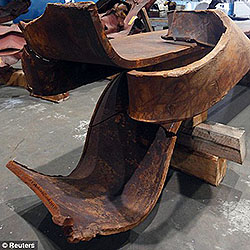 William Kane William KaneExponent & University of Pennsylvania “The Expert Witness: Case Studies in Materials Science” Failure analysis is an integral part of technical advancement. I will discuss several engineering failures, from small devices and objects that we contact every day, to the largest structures that make up our modern world. From coffee mugs to the World Trade Center towers, we will look at not just why and how failures occur, but the way in which we analyze those failures to obtain the most benefit moving forward. Failure analysis helps us to improve the world around us so long as we learn from our failures and work to avoid them the next time around. |
|
| January 8, 2014 World Cafe Live |
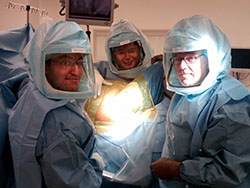 Eric L. Hume, MD Eric L. Hume, MDPenn Orthopaedics Perelman SOM, University of Pennsylvania “Adventures and Misadventures in Materials and Biology: 50 Years of Hip Replacement Progress” Hip replacement is a spectacularly successful operation to relieve pain from hip arthritis. Replacement offers high success rates and very good pain control, and allows high levels of recreation and work activity. It is a gold standard for successful surgical treatment. The development history is an interesting story of intuition, engineering methodology, materials development and selection, and biology. As most stories go, replacement was born from the mind of a visionary, steadily progressed with careful consideration of failures, took surprising leaps forward, but also saw catastrophes resulting from well-considered new concepts. We will start at the beginning, touch on some of the more interesting and important of these chapters, and end with where we are now and where I think we need to go. |
|
| January 8, 2014 World Cafe Live |
Matt Lazzara CBE, University of Pennsylvania “Personalized Medicine for Cancer” |
|
| January 20, 2014 Stoney’s British Pub |
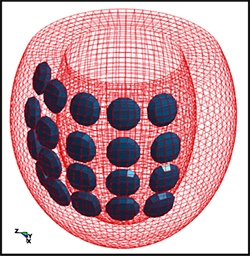 Jason Burdick Jason BurdickBioengineering, Univ. of Pennsylvania “Cardiac Repair Using Injectable Biomaterials” My laboratory is interested in designing new biomaterials for a range of biomedical applications. One area of interest is in developing new therapies for patients after a heart attack (myocardial infarction). After a heart attack, the heart undergoes a process called left ventricular remodeling, where the tissue changes from a healthy and functional structure to one that is dominated by scar tissue, geometrical changes, and may lack sufficient function. To treat this, my laboratory is designing injectable hydrogels that can be used to alter various processes in the heart through mechanics or through the delivery of therapeutic drugs. |
|
| February 10, 2014 Stoney’s British Pub |
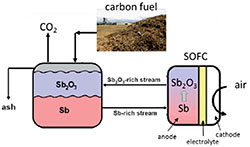 John Vohs John VohsChem. Eng., Univ. of Pennsylvania “Electrochemical Energy Conversion and Storage” In this talk I will initially give an overview of electrochemical devices, such as fuel cells and batteries, which are used to store and generate electricity. How these devices function, their efficiency, and how they are used in different applications will also be discussed. An emphasis will be placed on large scale applications and the role that electrochemical devices could play in a modern electrical grid which incorporates a high generating capacity from intermittent renewable sources such as wind and solar. The second half of the talk will focus on our research into the development of a fuel cell-battery hybrid that uses a molten metal electrode. This device has potential for use in both large scale energy storage and in the generation of electricity from a wide range of readily available resources, including biomass and coal. |
|
| February 12, 2014 World Cafe Live |
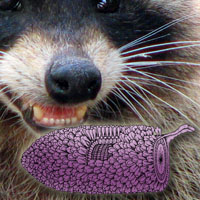 William Wunner William WunnerWistar Institute, Philadelphia “Rabies – A perpetual killer disease of humans challenges scientists, public health officials and governments” One of the oldest known animal diseases and the cause of more human deaths of any of the known animal diseases continues to present significant challenges in the 21st Century to research scientists, veterinary and public health professionals, governments, educators, media, and lay people worldwide. Through the Global Alliance for Rabies Control, people from more than 85 countries are involved on all levels of society and ready to take some action toward global elimination of endemic rabies. This talk will highlight how research scientists locally met the challenge of a rapidly spreading ‘raccoon rabies’ throughout the mid-Atlantic states from Virginia to Canada from the early 1980’s and developed a vaccine that can be distributed in edible baits to control the spread of rabies in wildlife, especially raccoons. The situation of canine rabies control in developing countries of Asia and Africa will also be discussed. Of particular interest is the development of vaccines and treatments for rabies in humans that will contribute to the elimination of human deaths from canine rabies. |
|
| March 5, 2014 World Cafe Live |
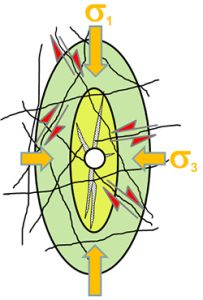 Tim Bechtel Tim BechtelEnviroscan Inc. & Univ. of Pennsylvania “Fracking, Fracing, or Frac’ing… What is Going on Down There?” This talk will summarize the lifecycle of an unconventional natural gas extraction well (fracking), and pause to explain in detail the rock mechanics and process of hydraulically fracturing rocks (fracing or frac’ing) to allow hydrocarbons to flow. And it is almost certainly not what you think. This is not an advocacy talk for any side in current geo-enviro-political debates, but a factual explanation of the process that will allow the listener to monitor or engage in debates armed with good information. |
|
| April 2, 2014 World Cafe Live |
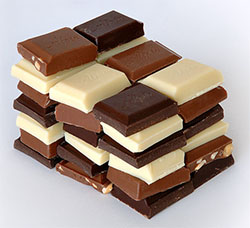 Russ Composto Russ CompostoMSE, University of Pennsylvania Schuyler Patton Central High School, Philadelphia “Eating in a Material World” Soft matter is found in diverse applications including sports (helmets); food (chocolate, eggs); skin and hair care (lotions) and devices (displays, drug eluting stents). In contrast to metals, soft matter can behave like a hard solid or soft liquid. In this discussion, we will investigate the molecules that make up food and give food their distinct properties and structure. For example, we will discuss why the snap, mouth feel and taste are quite different for the white, light brown and dark brown chocolates shown below. This will be a participatory lecture and samples will be provided. |
|
| April 14, 2014 Stoney’s British Pub |
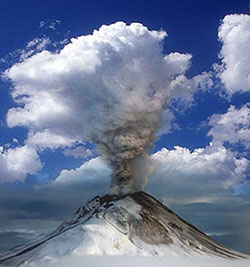 Bill ‘Bunsen’ Berner Bill ‘Bunsen’ BernerPhysics, University of Pennsylvania “Why is a Cloud like a Volcano?” A presentation of buoyancy and thermal convection that investigates why something floats and why heat can change whether something floats. What is found will be used to explain some of the most important behaviors in weather and geology. All ideas will include demonstrations, many of which can be reproduced with materials found in the home. |
|
| April 21, 2014 Stoney’s British Pub |
Gilbert Sloan and Janet Monge University of Pennsylvania “Advances in Paleoarchaeology of Bones” |
|
| April 29, 2014 World Cafe Live |
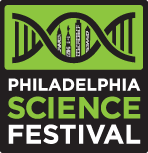 West Philly Science Showcase West Philly Science ShowcasePhiladelphia Science Festival event Philly tops the list of the best universities and hospitals across the country and many of these world-renowned institutions are located in West Philadelphia. Join experts from the University of Pennsylvania, University City Science Center, Monell Chemical Senses Center, The Wistar Institute, University of the Sciences, and Drexel University for an enlightening discussion on the groundbreaking research being conducted west of the river! Including LRSM participants Andrew Rappe (Chemistry) & Bill Berner (Physics). http://www.philasciencefestival.org/event/181-west-philly-science-showcase |
|
| May 7, 2014 World Cafe Live |
Jeff Saven Chemistry, University of Pennsylvania “The Molecules of Life” |
|
| May 19, 2014 Stoney’s British Pub |
 Eric L. Hume, MD Eric L. Hume, MDPenn Orthopaedics Perelman SOM, University of Pennsylvania “Adventures and Misadventures in Materials and Biology: 50 Years of Hip Replacement Progress” Hip replacement is a spectacularly successful operation to relieve pain from hip arthritis. Replacement offers high success rates and very good pain control, and allows high levels of recreation and work activity. It is a gold standard for successful surgical treatment. The development history is an interesting story of intuition, engineering methodology, materials development and selection, and biology. As most stories go, replacement was born from the mind of a visionary, steadily progressed with careful consideration of failures, took surprising leaps forward, but also saw catastrophes resulting from well-considered new concepts. We will start at the beginning, touch on some of the more interesting and important of these chapters, and end with where we are now and where I think we need to go. |
